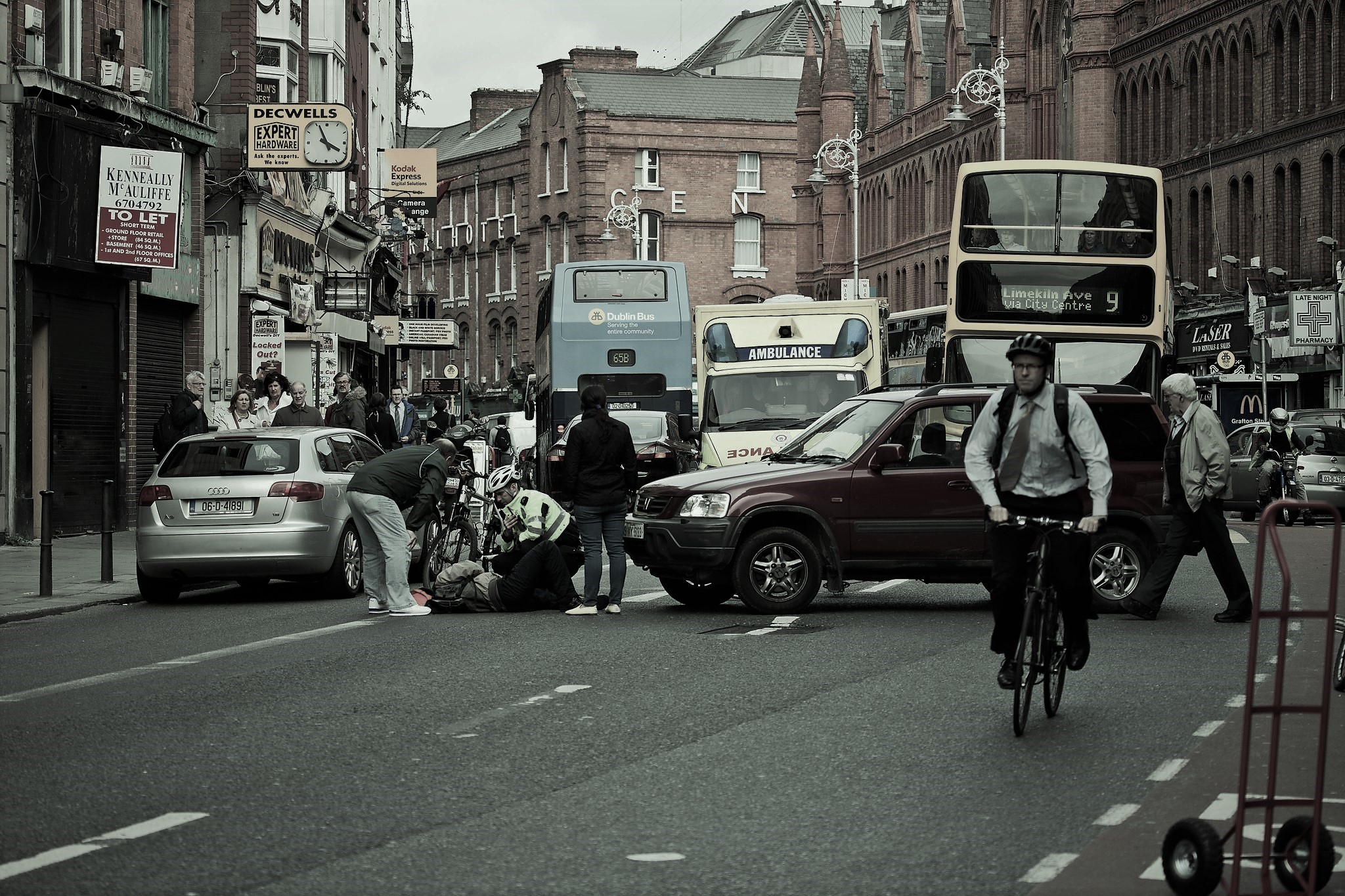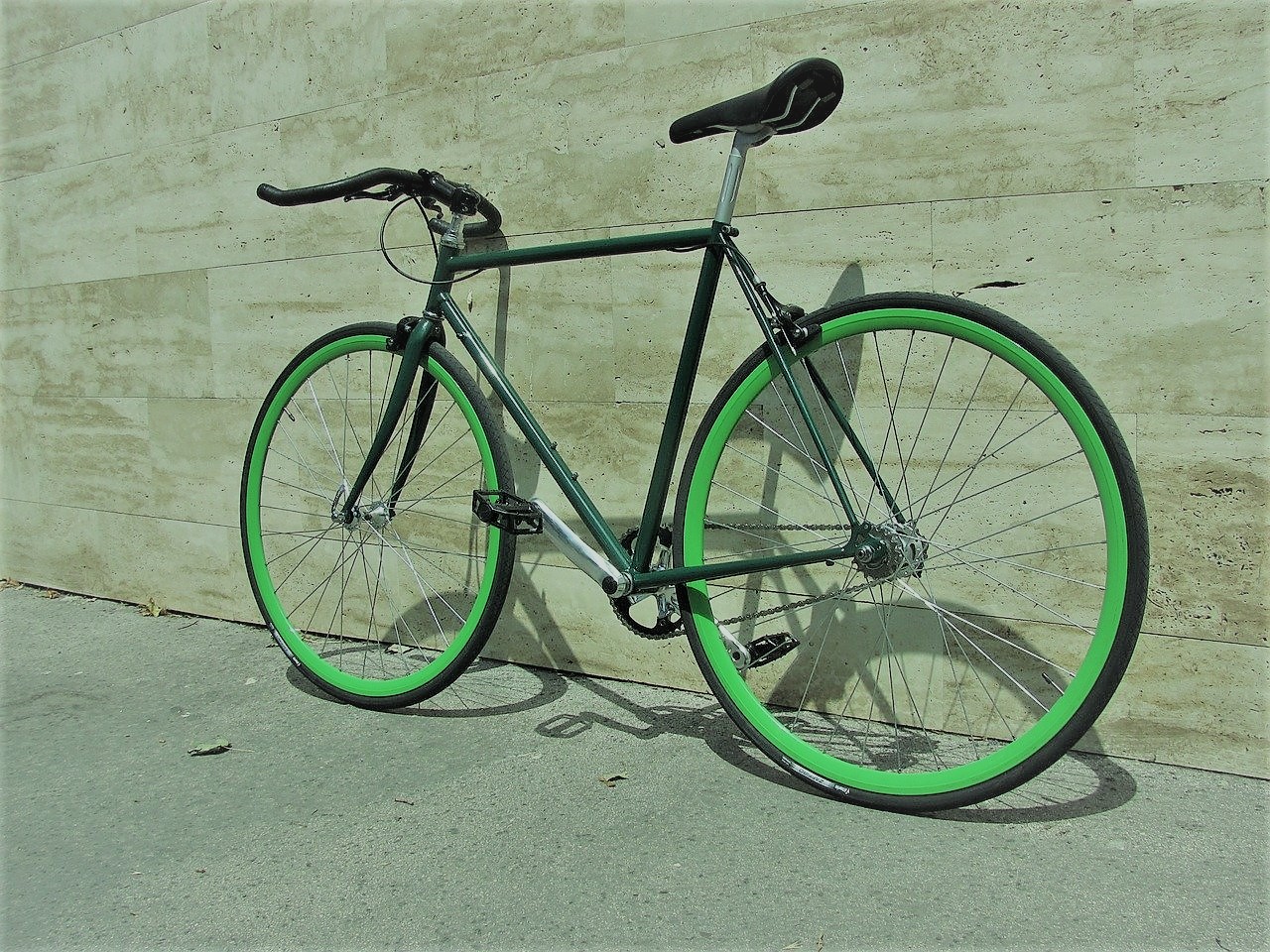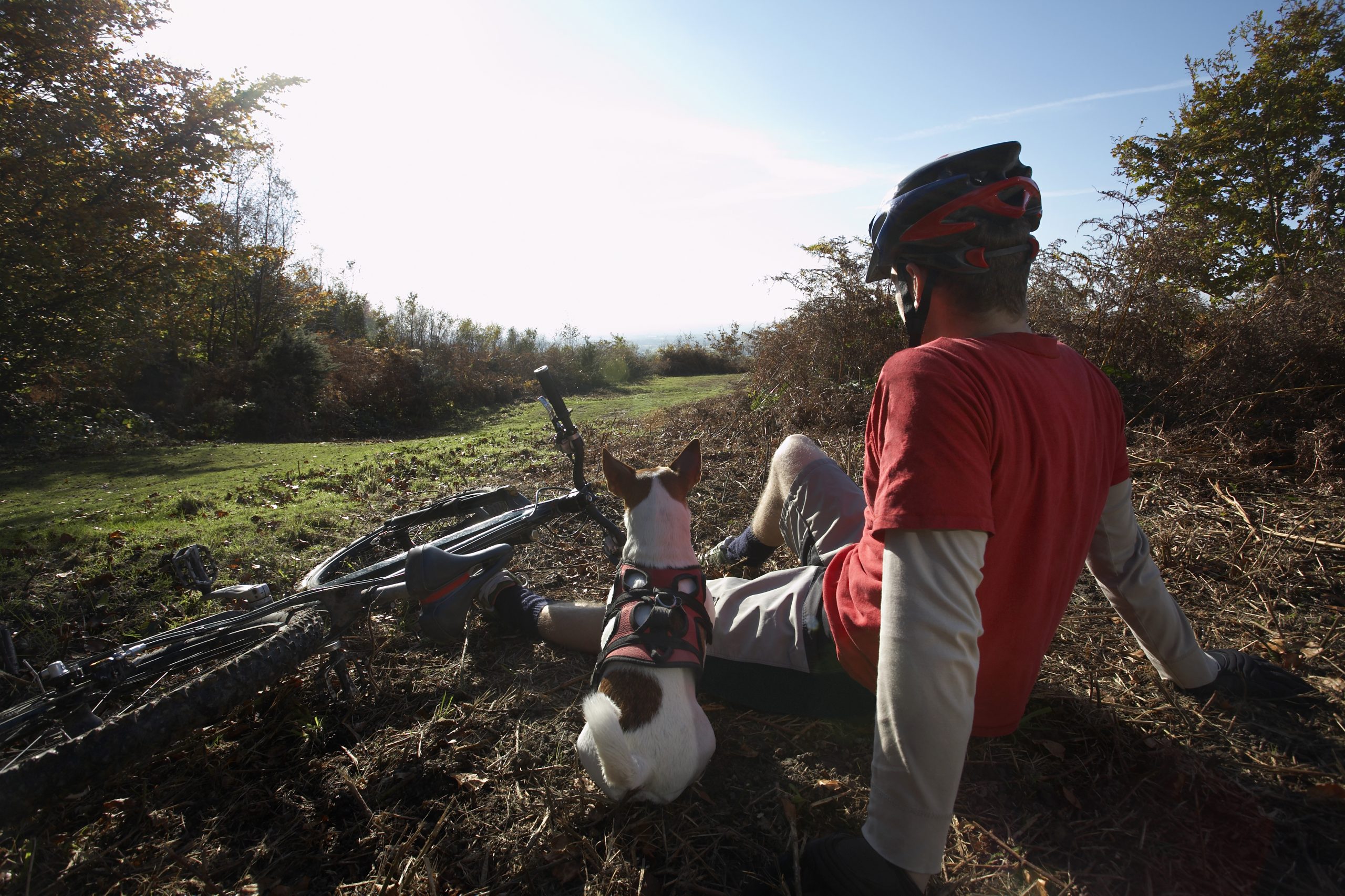18 Bicycle Safety Tips To Keep Your Life Safe On The Street
January 8, 2024
206 Views
0
SaveSavedRemoved 0

Table of Contents
Why do we need good bicycle safety tips? An American cyclist was hit and killed instantly on the road while riding his bike to work. His wife mourned the grief of losing her husband. She said that her husband just wanted the traffic safety law enforced earnestly by the police. Speaking of bicycle safety standards, cyclists aren’t up against other motorists. All they want are safer roads for everyone to share.
Are roads safe for everyone?
Not really. Solid bicycle safety tips are essential for cyclists, motorists, and pedestrians alike.
Do you want to stay safe on the busy road while cycling your bike?
Urban road cycling may look pretty much like taking a daunting action into an unpredictable mission. However, if you are equipped with the right knowledge and techniques, cycling in the city can be a safe and enjoyable way to get around.
Riding a bike in the city is gaining popularity among people. More and more cyclists opt to use road cycling as an eco-friendly way to move around the city. The number of cyclists in cities is increasing at an impressive pace. Although motor vehicles are still the dominant mode of transportation, you will see more and more people switching to bike commuting.
Also, road cycling increasingly become a popular mode of transportation because the bicycle itself is affordable and convenient. You do not have to spend time looking for parking space. Furthermore, you can take your bike wherever you want. However, there are various bicycle safety tips you need to know regardless of how novice or professional you are. In this article, we will provide some essential bicycle safety tips to keep you and your loved ones safe while exploring the city on the two-wheels.
How many bicycles related accidents or fatalities are in the U.S.?
A bicycle accident is a pressing issue when it comes to road safety. Thus, it is crucial to understand the scope of the problem. According to recent data, cyclist fatalities in the U.S. have increased by 25% since 2010, with a 10% increase in 2018 alone. Additionally, 75% of death in road accident occurs in urban areas. Making bicycle safety in towns and cities becomes a top priority.
New York City is currently ranked as the most dangerous city for cyclists, while Los Angeles has also witnessed an increasing number of fatalities from bicycle accidents since 2018. To tackle this issue, the city council in Los Angeles has announced the implementation of an initial plan to achieve zero deaths on the roads by 2025.
In 2019, over 800 cyclists were killed on U.S. roads due to traffic crashes. Several factors contribute to this alarming number, including driver inattentiveness, dangerous road conditions, poor road illumination at night, cyclist inattention, and violation of traffic rules and signs by both drivers and cyclists.
One major factor that can lead to bicycle accidents is the lack of dedicated bicycle lanes in most big cities. Without these lanes, cyclists are often forced to ride in traffic, putting them at greater risk of accidents. Additionally, “dooring” is a common problem, which occurs when a passenger or driver opens a car door in the cyclist’s path, causing the cyclist to be thrown into traffic. San Francisco alone recorded 203 bicycle accident injuries caused by dooring between 2012 and 2015.
Bike safety awareness needs various actions on multiple fronts. From improving road infrastructure to promoting awareness and safe cycling practices, we must work together to make roads safe for everyone.
Although many cities have built dedicated bike lanes for cyclists, unfortunately, most of them are not well-maintained and functional. As a result, many cyclists end up being victims on the road. Since a cyclist does not have much protection, they often suffer from severe injuries or even death in an accident.
However, these accidents and death tolls can be minimized by following bicycle safety rules, being attentive as a cyclist, paying attention as a driver, obeying traffic safety rules, being alert on the road, and improving fully functional and safe bicycle lanes.
Once you stick to these bicycle safety rules, you can avoid accidents and get around the city in a short time. These road safety tips are for your protection and the safety of the pedestrians and fellow car drivers sharing the road as well. Additionally, for those who just bought your road bike, you may find many useful tips in our article: how to ride a road bike for the first time.
Urban cycling can be a completely safe experience if you stick to cycling rules for the road. Let me look at 18 bicycle safety tips that you need to know.
It is advisable to do a proper bike fit by measuring your height. Also, please consult the manufacturer’s fitting chart for the right frame size for you. Furthermore, get a comfortable saddle by selecting the right width, shape, and padding. Don’t forget to leave at least 3-5 cm of clearance between the top tube and your groin area when standing flat-footed.
[wpdatatable id=7 table_view=regular]
It is crucial to regularly maintain your bike if you want to enjoy a safe and smooth cycling experience. Do bolts and nuts checking on your stem, handlebar, pedals, wheels, and seat post to make sure that everything is tightened properly. Also, test the headset by pressing the front brakes and checking for any looseness. Lastly, ensure the brakes are functioning well by squeezing the brake pads and cables. By following these simple tips, you can keep your bike in excellent condition and be ready to enjoy a worry-free ride.
Regularly checking tire pressure is important for your safety. Avoid over-inflating or underinflating, as this can affect balance and cause accidents. Air usually expands in hot conditions, which can push the inner tube outwards.
If you have found out that the tire has debris or deep cuts, replace it immediately as worn-out tires can be dangerous to ride on.
In addition, check your bike’s spokes if you hit a pothole. Make sure they are not wobbling when the wheels spin. By taking these precautions, your ride can be safer and more enjoyable.
Road safety while cycling is crucial, and distractions can be dangerous. Many cyclists use gadgets like MP3 players or smartphones while cycling, which can lead to accidents. Distractions while cycling increases the likelihood of accidents, so it’s essential to stay focused on the road.
What is the best solution to this problem then?
Switching your device to airplane mode or do not disturb mode is the key to avoiding distractions while road cycling. By eliminating technological distractions, you can focus on the road and navigate through traffic with ease, making your bike commute safer and more efficient. Remember that avoiding distractions is a fundamental rule of bike cycling safety.
Are you aware of the dooring?
Dooring is a common cycling hazard when the car door swings open suddenly and hit the cyclist passing by. To avoid this accident, cyclists should stay at least 3 feet away from parked cars when approaching the door zone. However, this may require you to leave the bike lane or to ride further into the traffic lane.
You should assume that the car you are passing by may not be empty, so it’s always best practice to stay alert and to maintain a safe distance. By doing so, you will help promote the safety of both cyclists and other vehicles on the road.
To abide by the rules of the road, you must:
Riding near buses and trucks can be dangerous due to blind spots. Stay safe by avoiding these areas, especially at intersections. Wear bright, reflective clothing and use lights or reflectors on your bike. Be aware of your surroundings and anticipate potential hazards. Pass oversized vehicles quickly and safely. Consider taking a bicycle safety course or joining a cycling group to improve your skills and confidence on the road.
To make your road cycling safer, ensure high visibility using the following bicycle safety equipment:
Are you wondering what could be the use of a mirror for your road bike?
Does a mirror make any difference?
Yes, we can assure you that a decent mirror is vital for road safety. You don’t have to make a guessing game of what will be behind you if you have a mirror installed on your bike. Low-price mirrors can alert you in real-time without looking back to ensure that there is no vehicle behind you.
Once you install a mirror, you won’t be able to ride a bike on the road without one. There is no need to glance backward when taking a turn or intermittently coming out of the lane; all you can do is look at the mirror. It will help you to get a sense of all the vehicles around you. You can improve bicycle safety standard manifold only by having a mirror installed on your bike.
Why do you need good road cycling helmets when riding a road bike?
A good road cycling helmet is essential for your safety when riding a road bike. Accidents involving larger vehicles, such as cars or trucks, pose a significant risk to urban cyclists. To minimize this risk, wearing a helmet is one of the most fundamental road cycling rules. While you may follow cycling regulations, it’s important to remember that others may not. You can buy a road cycling helmet online easily, and it’s essential to choose one with an excellent safety rating. Remember to wear a road cycling helmet for even short cycling trips, as required by road cycling rules.
Urban cycling can be challenging for beginners, but with practice, it becomes safer and easier. Learning and following bicycle safety rules is essential to ensure your safety while riding in the city. Although it may take time to get used to navigating through traffic, do not give up. Each trip will help you gain valuable experience and confidence, making subsequent trips safer and more enjoyable. With continued practice and adherence to safety rules, urban cycling can be a rewarding and beneficial mode of transportation.
Moreover, the research has shown that your riding skills will improve if you have performed enough strength training for cyclists.
Before hitting the road on your two wheels, it is important to plan your cycling route in advance. Utilizing free GPS services like Google Maps available on your smartphone can help planning your route and ensure that you are taking the safest path possible. By clicking the cycling paths option, the program will automatically display optimized bike routes and keep you off busy roads. Taking advantage of these tools will make your trip an enjoyable cycling experience.
Did you know that distractions cause almost half of all motor vehicles to fail to notice cyclists at busy intersections? To stay safe, it is best to avoid crossing on busy corners altogether. Instead, try to use pedestrian crossings when possible. This simple precaution can go a long way in keeping you safe on the road.
During rush hours, typically between 7.00-10.00 in the morning and 16.00-19.00 in the evening, traffic can be especially challenging for cyclists. To make the cycling experience safe for everyone, consider taking alternative paths, for instance, less busy streets. While these routes may take longer time, they usually offer a quieter and more secure journey.
Since most people use cycling activity to relieve their stress, riding during peak hours could be counterproductive. By refraining from cycling during rush hours, you can enjoy a ride while minimizing the risk of accidents.
In summary, opting for less busy bike paths during rush hours can be an effective way to secure your safety while cycling. Although it may take a longer time to commute, the benefits of a quieter and stress-free journey make it well worth the effort.
To ensure bicycle safety, ride in a straight line and avoid zig-zagging. Treat your bicycle like a car and signal your intentions clearly with hand signals. Maintain a distance of at least thirty meters ahead to spot potential hazards like potholes or road obstacles. Universal hand signals such as signaling right turns or stops can help promote safety and harmony on the roads. Remember to apply brakes only when necessary to avoid accidents and ensure a smooth ride.
Tailgating at traffic lights can be dangerous for cyclists. Typically, tailgating happens when most vehicles are not in motion, cyclists may inadvertently place themselves in the blind spots of two vehicles. Thus, they are not spotted by drivers. When the light turns green, both cars may start moving without noticing the cyclist’s position. To avoid accidents, cyclists should plan their movements carefully and avoid positioning themselves between two vehicles.
Drunk cycling is just as risky as drunk driving. Alcohol consumption can impair your physical and visual abilities, making it dangerous to cycle. This can result in distorted cycling and an increased risk of accidents, injuries, and traffic violations. Always cycle sober to stay safe on the road.
A bicycle does not require fuel or charging, but carrying cash is still essential for emergencies like flat tires or needing a ride. Weak phone signals in some areas also make it necessary to carry cash. In addition, carry a copy of your data, including your name and contact details of someone close to you, in case of medical emergencies.
This information will help others know whom to contact and provide immediate medical attention. Mention any allergies or medical conditions in the note to ensure accurate treatment. Stay prepared and safe on your rides by carrying these essentials.
Bottom Line
Cycling is one of the best fantastic ways to stay active and save time on your commute, however, it is essential to prioritize your safety while on the road. Unlike other vehicles, bicycles are likely to be exposed and susceptible to severe injury, so it is crucial to follow bicycle safety tips to minimize your risk.
Avoid riding under the influence of drugs or alcohol, as it can impair your ability to observe various road safety signs and follow traffic rules. Implementing road safety procedures for cyclists is vital, especially, when dedicated bicycle lanes are not available. Even a small bump can cause severe damage to you if hitting a high-speed motor vehicle on the road.
To increase road safety awareness, the public can play a vital role by educating the youth, conducting bicycle training workshops, and teaching people about road safety.
The 18 bicycle safety tips help make your bike trip an enjoyable experience while keeping you safe and sound. To stay safe on the road, you should wear a protective helmet, use bright and reflective clothing, and perform regular maintenance on your bike. With caution and common sense, you can enjoy all the benefits of this eco-friendly yet healthy mode of transportation.
18 bicycle safety tips for urban cycling
1Perform a proper Bike Fitting
It is advisable to do a proper bike fit by measuring your height. Also, please consult the manufacturer’s fitting chart for the right frame size for you. Furthermore, get a comfortable saddle by selecting the right width, shape, and padding. Don’t forget to leave at least 3-5 cm of clearance between the top tube and your groin area when standing flat-footed.
[wpdatatable id=7 table_view=regular]
2Check for Loose Bolts and Nuts, Brakes
It is crucial to regularly maintain your bike if you want to enjoy a safe and smooth cycling experience. Do bolts and nuts checking on your stem, handlebar, pedals, wheels, and seat post to make sure that everything is tightened properly. Also, test the headset by pressing the front brakes and checking for any looseness. Lastly, ensure the brakes are functioning well by squeezing the brake pads and cables. By following these simple tips, you can keep your bike in excellent condition and be ready to enjoy a worry-free ride.
3Check the Tires and Spokes
Regularly checking tire pressure is important for your safety. Avoid over-inflating or underinflating, as this can affect balance and cause accidents. Air usually expands in hot conditions, which can push the inner tube outwards.
If you have found out that the tire has debris or deep cuts, replace it immediately as worn-out tires can be dangerous to ride on.
In addition, check your bike’s spokes if you hit a pothole. Make sure they are not wobbling when the wheels spin. By taking these precautions, your ride can be safer and more enjoyable.
4Avoid distractions while on the road
Road safety while cycling is crucial, and distractions can be dangerous. Many cyclists use gadgets like MP3 players or smartphones while cycling, which can lead to accidents. Distractions while cycling increases the likelihood of accidents, so it’s essential to stay focused on the road.
What is the best solution to this problem then?
Switching your device to airplane mode or do not disturb mode is the key to avoiding distractions while road cycling. By eliminating technological distractions, you can focus on the road and navigate through traffic with ease, making your bike commute safer and more efficient. Remember that avoiding distractions is a fundamental rule of bike cycling safety.
5Remember to be alerted of parked cars at all times
Are you aware of the dooring?
Dooring is a common cycling hazard when the car door swings open suddenly and hit the cyclist passing by. To avoid this accident, cyclists should stay at least 3 feet away from parked cars when approaching the door zone. However, this may require you to leave the bike lane or to ride further into the traffic lane.
You should assume that the car you are passing by may not be empty, so it’s always best practice to stay alert and to maintain a safe distance. By doing so, you will help promote the safety of both cyclists and other vehicles on the road.
6Abide by rules of the road
To abide by the rules of the road, you must:
- Ride in the same direction as the traffic and avoid riding on sidewalks.
- Obey traffic lights and signals.
- Be courteous and yield to pedestrians.
- Keep updated on traffic laws.
7Be wary of the blind spots
Riding near buses and trucks can be dangerous due to blind spots. Stay safe by avoiding these areas, especially at intersections. Wear bright, reflective clothing and use lights or reflectors on your bike. Be aware of your surroundings and anticipate potential hazards. Pass oversized vehicles quickly and safely. Consider taking a bicycle safety course or joining a cycling group to improve your skills and confidence on the road.
8Use safety equipment to your advantage
To make your road cycling safer, ensure high visibility using the following bicycle safety equipment:
- Reflectors
- Headlights and tail lights
- Bright clothing
- Bicycle safety flag






